No, do not give your dog human conditioner. Our pH balance different from a puppy’s. Human conditioners are made for us. Using them can result in dryness, itching, and irritation of the skin
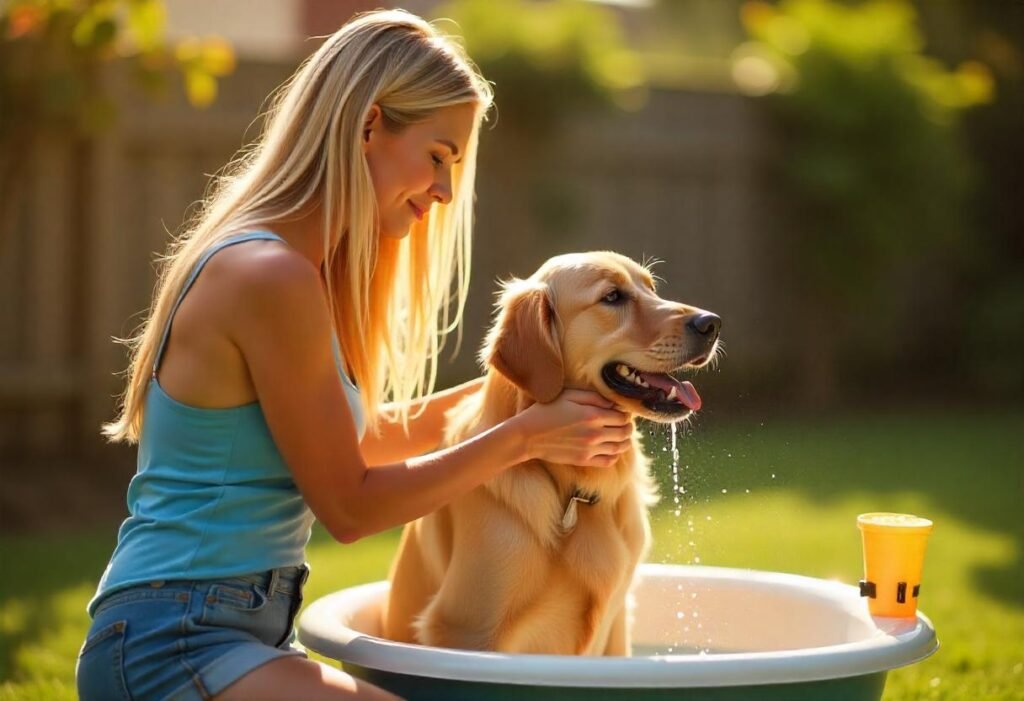
Dogs may not be able to handle the harmful chemicals, scents, and sulfates found in many . These materials may cause allergic responses or discomfort by leaving behind residue.
For a healthy, shiny coat, always use a dog-specific conditioner that is pH-balanced and safe for their skin. In an emergency, you can try coconut oil or an oatmeal rinse, but regular use of vet-recommended dog conditioners is best.
Keep your furry friend’s skin happy—use the right products.
Risks of Applying Human Conditioner to Dogs
Using human conditioner on dogs might lead to severe skin problems. Because dogs have a different pH balance, human goods may cause dryness, irritation, or allergic reactions. Some conditioners include harsh chemicals, sulfates, and synthetic scents, which can cause irritation, redness, and infection.
Human conditioner residue is difficult to remove, making your dog’s fur greasy and unpleasant. . Long-term use may impair their skin’s natural barrier, increasing the likelihood of rashes and dandruff.
To maintain your dog’s coat healthy and itch-free, always use a vet-approved, dog-specific conditioner that suits their sensitive skin.
Can I use conditioner on my dog?
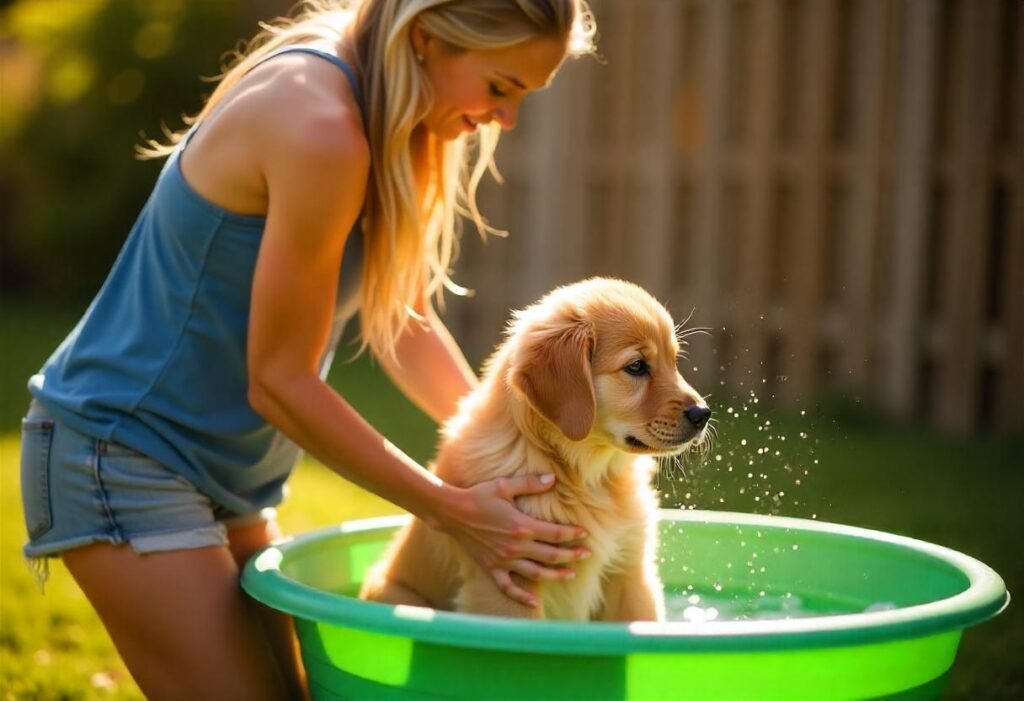
Yes, you can use canine-specific conditioner on your dog, but not human conditioner. Dog conditioners are designed to moisturize, protect, and untangle their fur while avoiding skin irritation.
If you use Human conditioner on your Dog’s, then it can cause dryness, itching, and allergic reactions in Your dog since their pH levels are different from those of people. Instead, always use a moderate, pH-balanced dog conditioner to maintain their coat smooth, lustrous, and healthy.
Conditioners are especially beneficial to dogs with long, curly, or dry fur, avoiding tangles and matting. However, overuse can lead to build-up, so only apply it when needed.
If you want to get the best results, you should use a vet-recommended conditioner on your Dog after shampooing because it keeps your dog’s coat and skin shiny and healthy.
What is a dog conditioner?
A dog conditioner is a grooming product that helps to moisturize, soften, and protect a dog’s coat. It reduces dryness, knots, and irritation while keeping the fur gleaming and healthy. Unlike human conditioners, it is pH-balanced for dogs and free of harsh chemicals that might injure their sensitive skin..
Why Should I Use Conditioner on My Dog?
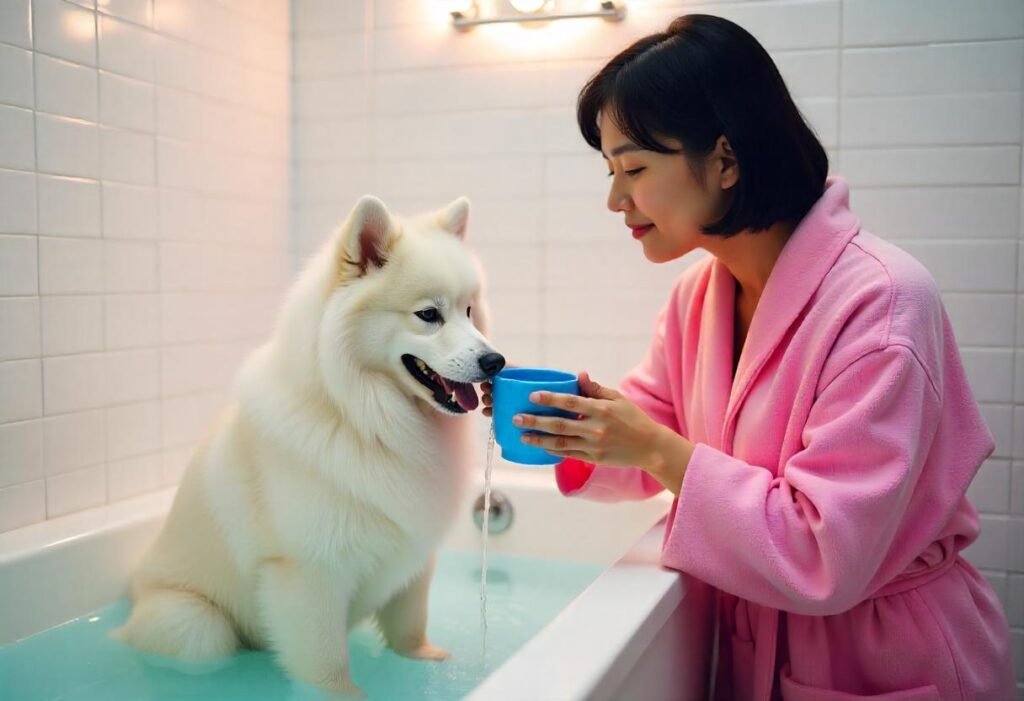
Dog Conditioner can help to keep your dog’s coat smooth, moisturized, and tangle-free. It can also prevents dryness, discomfort, and pain, particularly in dogs with long or curly fur.
Conditioner also retains moisture, keeping your dog’s skin healthy and free of peel. It creates a protective barrier, which reduces shedding and matting.
For the Best result, Use a dog-specific conditioner after shampooing to keep your dog’s coat smooth, glossy, and well-nourished.
4 advantages of Using Dog Conditioner.
1. Soothe your dog’s itchy skin
A dog conditioner moisturizes dry, itchy skin. It is able to reduce the peeling and discomfort, making your dog feel more comfortable.
2. Mostly Dog Conditioner Keeps Your Dog’s Coat Healthier and Shiny
Conditioners contain nourishing ingredients that help keep your dog’s fur soft, smooth, and glossy. If you use Regular then it will prevents dullness and an aggressive texture gradually.
3. Detangle Your Dog’s Long Coat
Conditioner reduces tangles and matting for dogs with long or curly fur, making grooming easier and painless.
4. It also helps your dog’s skin retain moisture after baths.
Bathing can remove natural oils, but conditioner replaces moisture to prevent dryness and irritation.
How do you select the Best Dog Conditioner?
Choosing the right dog conditioner ensures a healthy and bright coat and irritation-free skin. There are some common facts that you have to consider whenever you are selecting a Dog Conditioner for your puppy.
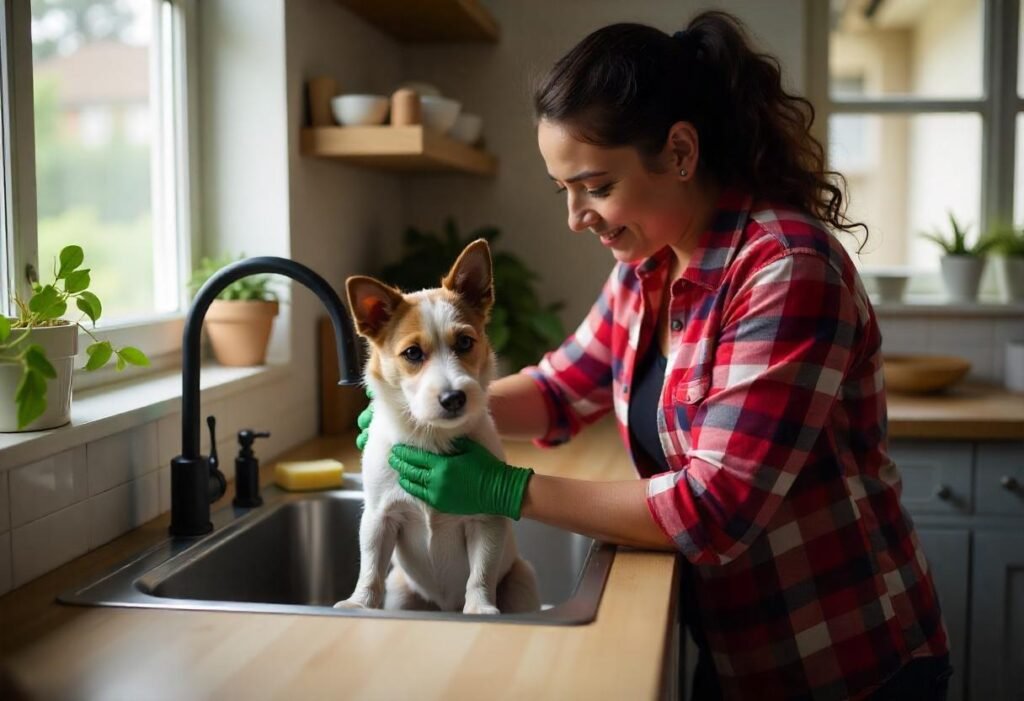
- If you are looking for a pH-balanced solution specifically for dogs’ delicate skin.
- Avoid artificial scents, sulfates, and parabens since these can cause allergic responses and dryness.
- If your dog has sensitive skin or allergies, use a hypoallergenic, veterinarian-approved conditioner.
- Choose conditioners with natural ingredients such as aloe vera, coconut oil, or oatmeal, which provide deep hydration and soothing properties.
To get the best results, choose a conditioner based on your dog’s coat type: moisturizing for dry fur, removing for long hair, and lighter for oily
What Are the Best Dog Conditioners (Vet-Recommended)?
Veterinarians recommend dog conditioners that are gentle, nourishing, and free of chemical
Here are some highly regarded choices:
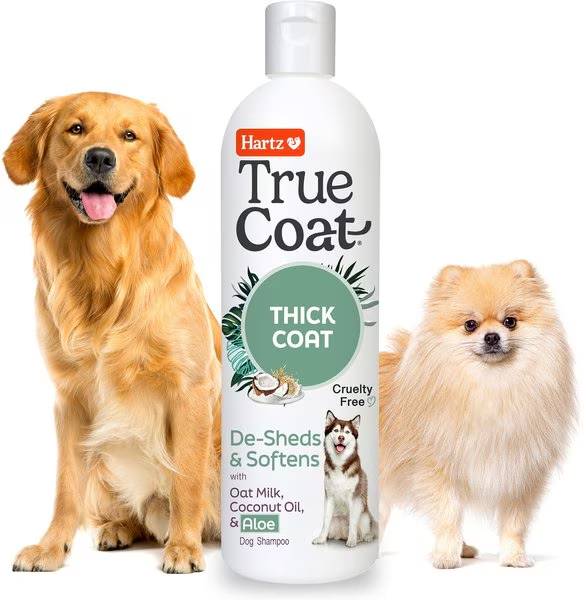
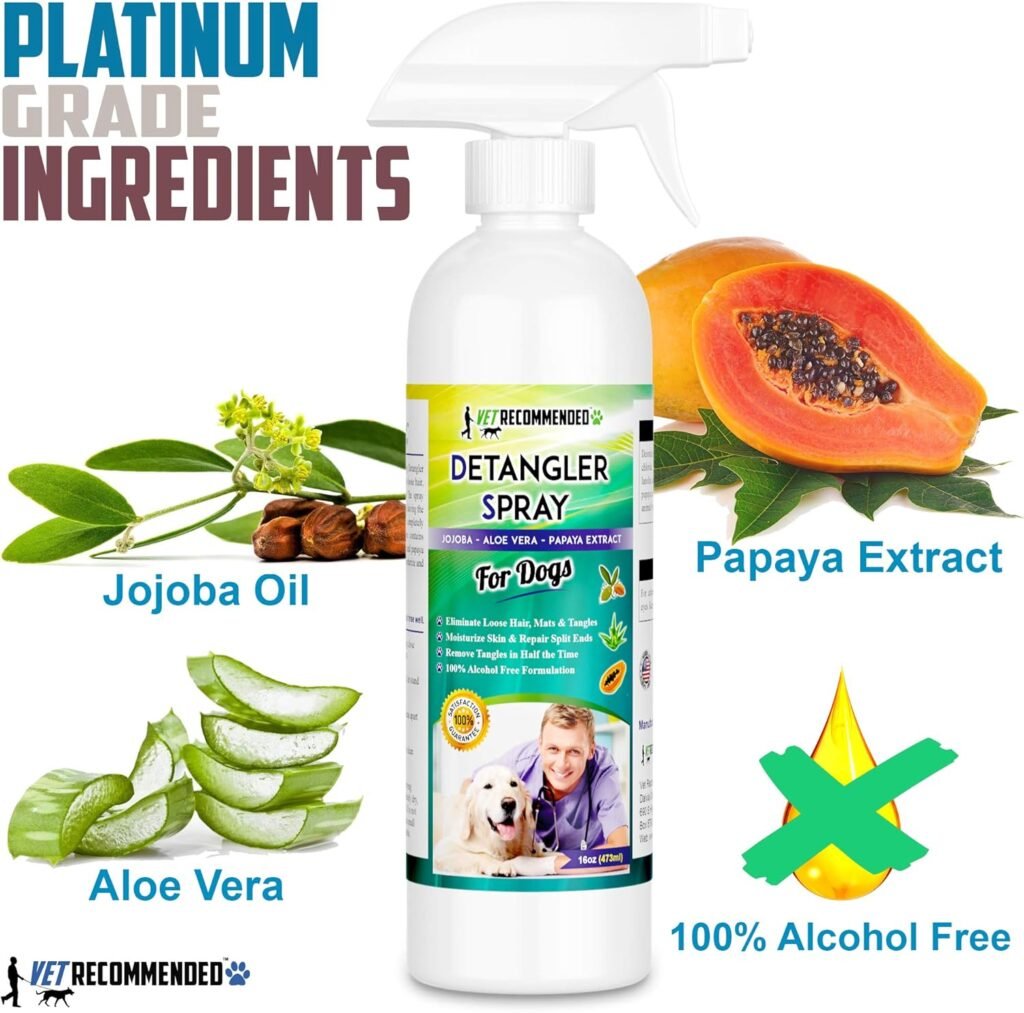
Hartz True Coat Thick De-Sheds & Softens with Oat Milk, Coconut Oil & Aloe Dog Shampoo Check Price
Dog Detangler Spray & Conditioner. Eliminate Loose Hair, Remove Matts | Made in USA Check Price
- Isle of Dogs Silky Oatmeal Conditioner is ideal for long-haired dogs. Check on Amazon | Check on Chewy
- Vet’s Best Moisture Mist Conditioner: hydrates and decreases shedding. Check on Amazon | Check on Chewy
- FURminatar deSheddig Conditioner-Helps control excessive fur loss Check on Amazon | Check on Chewy
Always use vet-approved solutions based on your dog’s coat and body requirements.
There Are Some Instructions for Using Dog Conditioners

How Will You Use Conditioner on Your Dog?
After shampooing, apply dog conditioner evenly, focusing on dry or tangled areas. Leave it on for a few minutes, then rinse thoroughly to avoid residue buildup.
How Frequently Should You Use Dog Conditioner?
Try to Use every 2-3 weeks,, depending on your dog’s coat type. Don’t use over because it can badly affect your Dog Skin.
When Can You Use Dog Conditioners?
Conditioners are ideal for tangled, dry, or itchy coats. Use them after bathing, outdoor activities, or seasonal shedding.
What Guidelines Should You Follow During Use?
- Always use a dog-safe, pH-balanced conditioner.
- Rinse thoroughly to residue and irritation.
- Avoid making contact with the eyes and ears.
3 Tips for Choosing the Best Dog Conditioner for Your Dog
- Check Ingredients – Apply hydrating formulations to dry fur and light conditioners to oily.
- Consider Coat Type – Apply hydrating formulations to dry fur and light conditioners to oily coats.
- Read Reviews – Look at the product’s cover paper or box to see is it has been recommended by veterinarians and received excellent reviews or not.
Common Mistakes to Avoid When Conditioning a Dog:
Over-Conditioning Issues
Too much conditioner can make the fur greasy and thick, resulting in dirt buildup. Use moderately for optimal results.
Using the Wrong Products
Never use human conditioner since it alters the pH balance and causes skin irritation. Always choose a dog-specific, hypoallergenic formula.
Proper conditioning maintains your dog’s coat smooth, healthy, and free of irritations!
Use a Shampoo and Conditioner Combo
Using a shampoo and conditioner combination can save time while also keeping your dog’s coat clean and healthy. Many 2-in-1 products cleanse gently while hydrating and detangling fur.
Benefits of Combining Shampoo and Conditioner:
- It saves time by consolidating two steps into one.
- Keeps natural oils in place, preventing dryness.
- Detangles fur and makes grooming easier.
- Ideal for short-haired dogs who don’t require extensive conditioning.g.
For the greatest results, choose a pH-balanced, dog-specific combination free of sulfates and harsh chemicals.
How Does Dog Conditioner Different From Human Conditioner?
Dog conditioner is specifically designed for their sensitive skin and coat. Unlike human conditioner, it is pH-balanced for dogs and contains no harsh chemicals that can cause irritation.Residue-Free: It rinses readily, reducing irritation and accumulation.
Key Differences:
- pH Levels: Dog conditioner has a neutral pH (6.2–7.5), but human conditioner is more acidic.
- Ingredients: Dog conditioners are made with gentle, hypoallergenic ingredients that include no sulphates or parabens.
- Residue-Free: It rinses readily, reducing irritation and accumulation.
Residue-Free:Use a dog-specific conditioner to avoid skin issues and allergic reactions.
Best Grooming Products to Share With Your Dog

Some grooming products are safe for both humans and dogs, which makes them useful for pet owners.
Dog-Friendly Products to Share:
- Coconut Oil – is excellent for hydrating skin and relieving discomfort.
- Coconut oilAloe Vera Gel – Relieves minor skin irritations in people and pets.
- Soft Bristle Brush – Helps to untangle hair and remove loose fur.
- Microfiber Towels – Absorb moisture quickly, allowing for simple drying.
Always verify labels and ingredients before sharing grooming items with your pet to ensure their safety.
Frequently Asked Questions (FAQs)
How Frequently Should You Bathe Your Dog?
Dogs should be bathed every 3 to 6 weeks, depending on breed, coat type, and degree of activity. Over-bathing can remove natural oils, resulting in dryness and discomfort.
What Should I Use If I Don’t Have Dog Conditioner?
Aloe vera, oatmeal rinse, and coconut oil are natural substitutes. Human conditioner can irritate your dog’s skin, so stay away from applying it.
What is the recommended frequency of use for dog conditioner?
Every two to three weeks, or anytime your dog gets a bath, use dog conditioner. Overuse can result in oily fur, but underuse can cause dryness and tangles.
What Should You Do If Your Dog Has a Reaction to Dog Conditioner?
Rinse your dog’s coat thoroughly with lukewarm water and discontinue use. If the inflammation persists, see a veterinarian for further information.
Key Takeaways for Can I Use Conditioner On My Dog?
Never use human conditioner on a dog. Always use a pH-balanced, dog-specific conditioner to maintain their coat silky, healthy, and irritation-free.


Pingback: Best Dog Grooming Schools: Training, Career & Salary Guide
This is such an informative and well-organized post! I really appreciate how you broke down the reasons why human conditioner isn’t safe for dogs and offered practical alternatives like coconut oil and oatmeal rinses. The tips on choosing the right dog conditioner and understanding coat types are super helpful too. Definitely saving this for future reference—thanks for looking out for our furry friends!